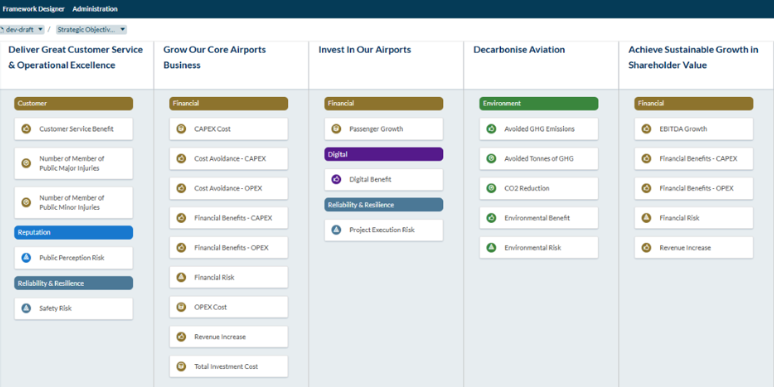Integrated Capital Planning Across Your Industrial Asset System
By adopting our value-based investment planning methodology, Airbus can scale production efficiently while transforming how capital is allocated across its industrial asset system. Here’s what becomes possible:
- Harmonise Short-term Production Needs with Long-term Strategic Priorities across MPS, S&OP, and MPR Cycles – This integrated planning connects operational realities at plants like Saint Eloi with broader business objectives—ensuring seamless coordination across departments and decision levels.
- Forecast the Operational Impact of Capital Investments—ensuring critical assets and skilled resources are in place to support production rate targets and order book commitments.
- Evaluate, Optimise, and Compare Investment Options on a Consistent Economic Scale – By scoring every investment on a consistent economic scale, Airbus can maximise portfolio value within target contraints —whether by unlocking capacity or mitigating key risks.
- Meet Ramp Up Targets – By leveraging asset health models, Airbus can proactively maintain and upgrade high-impact assets—like drilling centres and gantry machines—before failure risks compromise production.
- Re-prioritise and Redirect Budget Towards Alternative Investments – This flexibility minimises capital underutilisation and keeps momentum high—even when plans shift.

Strategic Capital Allocation: A Value Framework Built for Airbus
Airbus has the opportunity to transform how capital is allocated across its industrial asset base. By adopting a tailored value framework, investments can be assessed not just on cost—but on strategic contribution to objectives like safety, production capacity, sustainability, and long-term value. This unified approach enables consistent, transparent decision-making across business units, helping Airbus prioritise the most impactful projects, optimise under constraints, and maximise the return on every euro invested.

Proactive Risk Mitigation and Scenario Modelling for Smarter Decisions
Airbus can move from reactive planning to proactive risk management by integrating quantified risk mitigation and scenario modelling into its capital planning process. The tailored framework enables every investment to be assessed not only by its expected benefits, but also by the risks it reduces—across safety, production loss, compliance, and environmental impact. Scenario modelling allows Airbus to simulate changes in budgets, timelines, or resource constraints, and understand the downstream effects instantly. This empowers decision-makers to balance cost, risk, and performance—while staying agile in the face of uncertainty.


